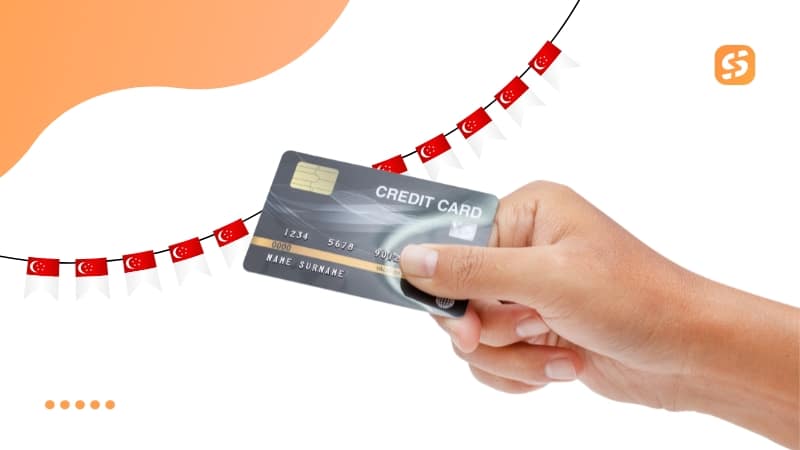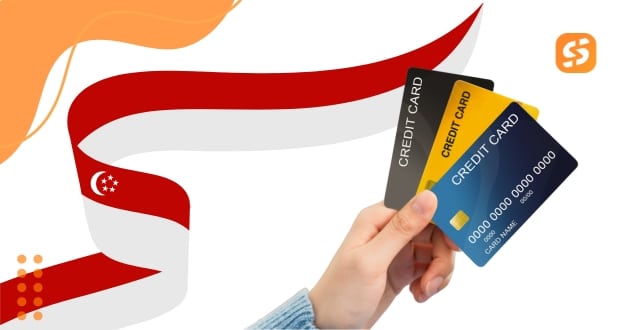Anúncios
To compare credit cards Singapore effectively, it’s important to understand that this decision goes far beyond choosing a piece of plastic with a shiny logo. Credit cards are powerful financial tools, they can either help you save and earn rewards or trap you in unnecessary debt if chosen carelessly.
In Singapore, where the credit card market is highly competitive and banks continuously introduce new offers, promotions, and exclusive perks, comparing your options isn’t just a good idea, it’s essential.
When you compare credit cards Singapore, you open the door to understanding how each card aligns with your personal spending patterns, financial habits, and lifestyle preferences.
Some cards are designed to reward frequent travellers with generous air miles and lounge access, while others focus on cashback for everyday spending like groceries, fuel, or dining.
Anúncios
By comparing, you can pinpoint which one fits your needs best, whether you want to maximize savings, enjoy premium privileges, or simply manage your monthly expenses more efficiently.
Another reason to take the time to compare credit cards Singapore is that the fine print often hides critical details that can make or break your financial strategy. Annual fees, late payment charges, foreign transaction fees, and minimum spend requirements all vary widely from one card to another.
Understanding these elements before committing helps you avoid unpleasant surprises later and ensures that every benefit you receive outweighs the potential cost.
Understanding Why You Should Compare Credit Cards
When you decide to compare credit cards Singapore, you take an essential step toward using your finances wisely. With dozens of options available, from cashback to air-miles cards, comparing allows you to identify which one matches your lifestyle and habits.
Each card has its own rules, rewards, and hidden fees, and knowing these details before applying helps you make choices that truly benefit your budget instead of adding unnecessary costs.
Moreover, comparison prevents surprises and ensures you get real value from your spending. Two cards may seem similar, but one could demand high minimum spends or exclude key categories like groceries or utilities.
By comparing, you understand how reward caps, foreign transaction fees, and annual charges affect your day-to-day use. Allowing you to choose a card that maximizes benefits while minimizing expenses.
For younger consumers, starting with a Student Credit Card Singapore is a smart way to build financial discipline early. These cards usually have no annual fees, manageable credit limits, and rewards that fit a student’s lifestyle, such as dining discounts or online shopping perks.
Over time, this responsible use helps establish a positive credit history and paves the way for more advanced financial products in the future.
Ultimately, learning to compare credit cards Singapore goes beyond chasing the best promotion. It’s about understanding your priorities, evaluating offers with clarity, and protecting your financial health.
As your goals evolve, from studying to travelling or managing a business, regularly reviewing and comparing your credit card options ensures that your choice always supports your financial growth and independence.
Key Factors to Consider
When comparing credit cards, focus on the details that make the biggest impact on your wallet.
1 – Rewards and Earn Rates
Check how many miles, points, or cashback percentage you earn per dollar spent. Some cards offer 2 % cashback on specific categories like dining or transport. While others reward you with up to 4 miles per dollar spent overseas. Always verify if there’s a cap on earnings or if rewards are unlimited.
2 – Fees and Hidden Costs
Low-fee cards can save you money in the long run. Look out for annual fees, which can range from zero to several hundred dollars, and foreign transaction charges that typically sit around 2.5 %–3.25 %. If you frequently travel or shop online, these costs matter.
3 – Eligibility and Income Requirements
In Singapore, most standard cards require a minimum annual income of around S$30,000, while premium cards may ask for S$45,000 or more. Make sure you meet these criteria before applying to avoid rejections that could affect your credit score.
4 – Benefits and Perks
Extra privileges often include airport lounge access, complimentary travel insurance, and exclusive dining deals. However, make sure these perks are relevant to you. There’s no point in paying a high fee for luxury benefits you’ll rarely use.
5 – Spending Patterns
To compare credit cards Singapore effectively, first analyse where your money goes each month. If most of your budget goes to daily essentials, cashback cards may suit you better. On the other hand, if you’re often abroad, a miles card with low foreign transaction fees might be the ideal match.
Types of Credit Cards in Singapore

- Cashback Cards: Perfect for everyday use, cashback cards give you a percentage of your purchases back in cash. They are simple and ideal for those who prefer tangible rewards. However, remember that higher cashback rates often come with spending thresholds or category limitations.
- Miles and Travel Rewards Cards:If travelling is part of your lifestyle, these cards can turn every dollar into air miles. They often include added benefits like free travel insurance, priority boarding, or hotel discounts. Still, miles cards usually carry higher annual fees, so weigh the value of perks against your travel frequency.
- Low-Fee or No-Annual-Fee Cards: These cards focus on affordability. They offer basic rewards with minimal or no annual fees. While their perks may be modest, they’re excellent for first-time users or those who prefer simplicity.
- Premium or Luxury Cards: High-income earners might prefer premium cards offering concierge services, airport lounges, and exclusive event access. These cards provide status and comfort, but come with steep income and spending requirements.
How to Compare Credit Cards Effectively
When you begin to compare credit cards Singapore, follow a structured approach to avoid confusion.
Start by listing your monthly expenses groceries, dining, online shopping, transport, and travel. Once you have this overview, determine your goal: do you want to save money through cashback, travel more using miles, or minimize costs with low fees?
Next, shortlist two or three cards that match your profile. For each, note down key features like reward rates, annual fees, and extra perks. Then, calculate your effective reward value by considering how much you’ll spend and what you’ll earn back.
For instance, if a card offers 1.5 % cashback but has a S$100 annual fee, you’d need to spend at least S$6,700 yearly just to break even. In contrast, a no-fee card might give you slightly lower rewards but with zero maintenance costs. Making it more practical for smaller spenders.
Also, keep an eye on sign-up promotions. Many banks in Singapore offer limited-time bonuses such as additional cashback or free luggage when you meet specific spending targets within the first three months.
Finally, make sure you understand redemption rules. Some reward points expire, and others have restrictions on what you can redeem. Simplicity often wins when it comes to long-term value.
A Practical Example
Imagine you spend about S$3,000 per month: S$1,200 on groceries, S$500 on dining, S$300 on online shopping, and S$1,000 on travel or overseas purchases.
A cashback card giving 1.5 % on all categories would yield around S$45 monthly, or S$540 yearly. If the annual fee is waived for the first year but S$100 after that. Your effective gain in year two drops slightly.
Meanwhile, a miles card offering 2.2 miles per S$1 overseas could earn 2,200 miles for your S$1,000 travel spending. If you value 1,000 miles at about S$10, that’s roughly S$22 in travel value, less impressive unless you redeem often.
This comparison shows that the best card depends entirely on how you spend. Frequent travellers may get more from a miles card, while homebodies will likely benefit more from a simple cashback option.
Mistakes to Avoid
When comparing credit cards, avoid the common traps that lead to wasted money:
- Choosing based only on the sign-up gift rather than long-term value.
- Ignoring foreign transaction fees on overseas or foreign-currency purchases.
- Applying for multiple cards at once, which can hurt your credit record.
- Overestimating how much you’ll actually redeem in points or miles.
- Carrying a balance and paying high interest, which negates any rewards earned.
The Singapore Advantage
The credit card landscape in Singapore is one of the most competitive in Asia. Banks constantly roll out new rewards and digital tools to attract customers. This makes it easier for you to compare credit cards Singapore using online calculators and comparison pages. Which clearly display rates, fees, and promotions.
Additionally, the market’s diversity means there’s something for everyone, from students seeking entry-level cards to professionals eyeing luxury benefits. With careful selection, you can find a card that matches your spending style perfectly.
Conclusion
To compare credit cards Singapore is more than just a quick comparison of rewards or flashy promotions. It’s an intentional decision to align a financial product with your habits, goals, and budget.
By analysing your spending, reading the fine print, and comparing benefits seriously, you ensure the card you choose will truly enhance your financial well-being rather than undermine it.
Remember that the ideal card isn’t always the one with the highest points or the longest list of perks. It’s the one you will use wisely, pay off in full, and which aligns with your everyday lifestyle. Whether you prioritise cashback, air miles, or simply low fees, your card should reflect your real habits, not the marketing hype.
Make it a habit to revisit your decision periodically. Your income may change, your travel frequency may shift, and new cards may enter the market. In this evolving environment, comparing your options again and regular review will help you stay ahead and avoid letting your chosen card become outdated or costly.
If you’re looking for more detailed information, including specific card features and comparison tools, you can visit the official website of HSBC Bank Credit Cards. Ultimately, the goal is simple: to choose a card that serves you, not one you have to adjust your habits for. With thoughtful comparison and regular review, you’ll make a choice that supports your financial growth and gives real value for your money.



















